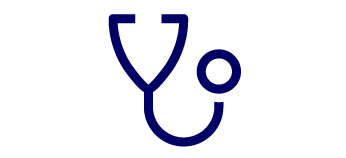If you’re someone who suffers from allergies, frequent respiratory infections or even just a common cold, you may have considered trying a sinus rinse (aka nasal rinse). These popular at-home treatments are generally considered a safe and effective way to clear up congestion.
“Done properly, a sinus rinse can help clean out the nasal passages and maintain a healthy environment inside your nose,” says Amrita Ray, D.O., M.P.H., an otolaryngologist at Henry Ford Health.
What Is A Sinus Rinse?
Whether you call it a sinus rinse, nasal rinse or nasal irrigation, the treatment is essentially the same. “Think of it as like a shower for the inside of your nose,” says Dr. Ray. “A sinus rinse can help flush dirt, bacteria, pollen and other pollutants out.” When you’re stuffed up, a rinse is a natural, medication-free way to thin the buildup of mucus so you can breathe better.
There are several different ways to do a sinus rinse—and a variety of over-the-counter products are available to help you do it.
A simple tool for doing a sinus rinse is a squeeze bottle of saline (also known as salt water). It’s important to use saline and not regular water, which will dry out the nose. You can buy these at the drugstore or make one yourself. There are also devices that include pre-filled saline canisters. Or you can use a neti pot, which is specially designed to pour saline into your nostrils instead of spraying.
No matter what you use, the results should be similar. As you squirt water into one nostril at a time, it flushes all the linings of the nasal cavity before coming back out. “In theory, you can flush one side, the saline travels all the way through, then comes back out the other nostril,” says Dr. Ray. “But it’s just as effective to rinse more gently, then repeat it on the other side.”
Who Should Try Sinus Rinses?

ENT Care At Henry Ford
Sinus rinses are beneficial for several respiratory conditions—and for routine nasal care. “It’s okay to do it on a regular basis, every day or even several times a day when you’re experiencing congestion or feeling sick,” says Dr. Ray. “Sinus rinses are a safe, non-medicated way to keep your nose healthy and clear.”
Sinus rinses are especially effective when you’re around a lot of allergens (like pollen, dust, pet dander), pollutants or when you have a cold or other upper respiratory infection. “The longer those irritants stay inside your nose, the longer the body has to react to them,” says Dr. Ray. “When you flush them out, you have less swelling of the nasal lining and less mucus buildup.”
Doing regular sinus rinses can even shorten the duration of a cold or respiratory illness. “Flushing your sinus regularly means the virus can’t take hold as easily and helps get it out of your system faster,” says Dr. Ray.
Sinus rinses are safe for nearly everyone at any age. Dr. Ray cautions that people who’ve had sinus surgery or facial trauma should consult their doctor to see if it’s safe for them to use.
Tips For A Safe And Effective Sinus Rinse
Even though sinus rinses are generally safe, you need to do it properly in order to get the best results. Whether you use a prefilled container or are filling your own bottle, it’s important to keep the container—especially the tip—clean. Be sure to wash it with soap and water after every use to avoid introducing new bacteria into your nasal passageways.
If you are making your own rinse, only use distilled or boiled (and then cooled) water. “Tap water can contain trace amounts of pesticides, germs, minerals or other possible irritants,” says Dr. Ray.
The American Academy of Allergy, Asthma & Immunology (AAAAI ) recommends this recipe:
- Mix 3/4 teaspoon of iodide-free salt and 1/4 teaspoon of baking soda.
- Stir the mixture into 1 cup of lukewarm distilled or boiled water.
- Fill a bulb syringe or nasal rinse bottle.
When you first try sinus rinses, it can feel sloppy and even a bit uncomfortable. Dr. Ray has these tips for a better rinse:
- Lean forward: It may seem natural to tip your head back, but that position can flood too much liquid into your nostrils, ears and throat. Instead, lean forward over a sink (or do it in the shower).
- Get your position right: Tilt your head left as you squirt the rinse into your right nostril. Then tilt right as you repeat the rinse in your left nostril.
- Insert the tip of the bottle or syringe gently: “The tip barely goes in, and you should point it out toward your ear,” says Dr. Ray.
- Keep the fluid out of your ears: “Humming or saying the letter ‘K’ helps close off the eustachian tubes and prevents water from going into the ears,” she says.
Once you get the hang of it, a regular sinus rinse can help keep your nose clear and keep you breathing easy.
Reviewed by Dr. Amrita Ray, an otolaryngologist who sees patients at Henry Ford Hospital and Henry Ford Medical Center - Lakeside.



